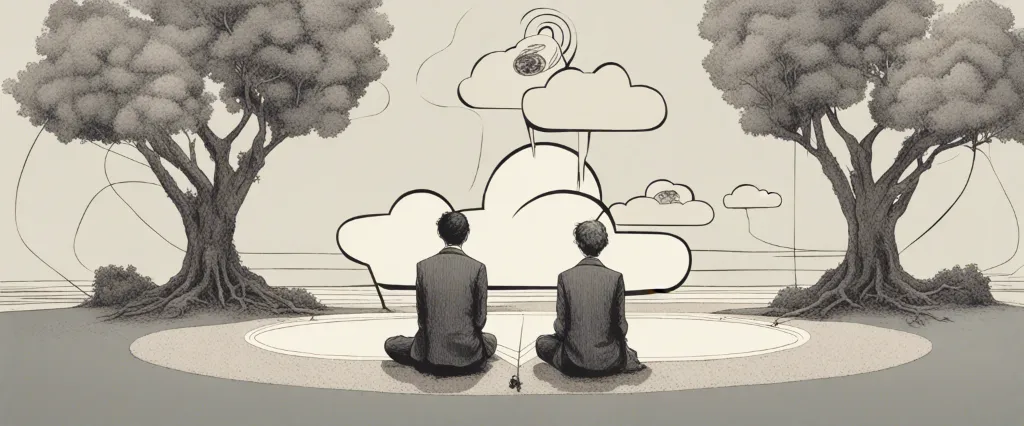
In the realm of human relationships and sexuality, various perspectives and philosophies have emerged over time, aiming to explore the intricate dynamics that shape our intimate connections. Two books that have garnered attention and sparked discussions in this realm are Dossie Easton’s “The Ethical Slut” and Robert Greene’s “The Art of Seduction.” Despite their seemingly divergent titles, these books delve into the depths of human desires, exploring spheres of sexuality, communication, and power dynamics. In this comparative study, we shall illuminate the distinct approaches of Easton and Greene, dissecting their ideas, rationales, and methodologies to unveil the contrasting perspectives they offer on relationships and personal empowerment.
“The Ethical Slut” authored by Dossie Easton and co-authored by Janet W. Hardy, challenges conventional norms surrounding sexuality and relationships, redefining the concept of “slut” to embrace a positive and empowering perspective. Exploring consensual non-monogamy with an emphasis on ethical conduct, Easton and Hardy aim to liberate individuals from the societal constraints that frequently stigmatize non-traditional relationship dynamics. Through embracing autonomy, communication, and self-awareness, they provide a framework for individuals seeking to navigate non-monogamous relationships without compromising trust, respect, and personal growth.
Contrasting this perspective, “The Art of Seduction” by Robert Greene takes readers on a mesmerizing journey into the power dynamics involved in the realm of seduction. Greene delves into historical narratives and psychological insights to uncover the subconscious mechanisms that underpin seduction techniques. Although steeped in strategy and psychological manipulation, his book explores the seductive arts as a means of personal growth, empowering individuals to understand human desires, build confidence, and enhance their interpersonal allure.
As we embark on this comparative study, we will examine the fundamental differences and surprising intersections between these two seemingly disparate works. Our exploration will focus on the values they espouse, the strategies they employ, and the ultimate ideals they seek to provide to their readers. By navigating the realms of sexuality, ethics, and personal growth, we aim to shed light on the multifaceted nature of human relationships while critically analyzing the implications of these philosophies in contemporary society.
Intriguingly, although “The Ethical Slut” and “The Art of Seduction” appear strikingly dissimilar at first glance, both books endeavor to guide individuals towards a more holistic understanding of themselves and their interactions with others. Through this comparative study, we will unravel the nuances of their teachings, encouraging a reflective analysis of the profound impact they have on our perceptions of relationships, trust, personal empowerment, and the intricate dance between desire, ethics, and seduction.
Brief Summary of Two Books
The Ethical Slut by Dossie Easton
The Ethical Slut by Dossie Easton, is a landmark book published in 1997 that challenges society’s traditional views on relationships, monogamy, and sexuality. In this empowering guide, Easton aims to change the perception surrounding the term “slut” and redefine it as an ethical and consensual way of engaging in multiple relationships, whether sexual or emotional.
The book begins by debunking the idea that a single monogamous relationship should be the ultimate goal for everyone. Easton believes that individuals should have the freedom to explore their own desires and needs, without shame or guilt. She introduces the concept of “ethical sluttery,” emphasizing the importance of open communication, honesty, and respect among all partners.
Throughout the book, Easton provides practical advice on topics such as negotiating boundaries, addressing jealousy, and dealing with societal judgment. She guides readers on how to establish and maintain healthy non-monogamous relationships with multiple partners. By advocating for ethical behavior and mutual consent at all times, Easton encourages readers to build relationships that are based on trust and individual choices rather than societal expectations.
The Ethical Slut also delves into topics like polyamory, the understanding and handling of different relationship dynamics, and the exploration of kink and BDSM (bondage, discipline, dominance, submission, sadism, and masochism). Easton emphasizes that these alternative lifestyles and preferences are valid and can be pursued in an ethical and consensual manner.
Overall, The Ethical Slut is a groundbreaking book that challenges societal norms and empowers individuals to embrace their own desires while nurturing healthy and respectful relationships. It offers practical guidance and serves as a valuable resource for those seeking alternative relationship structures and exploring their personal boundaries in an ethical way.
The Art of Seduction by Robert Greene
“The Art of Seduction” by Robert Greene is a comprehensive guide that explores the strategies, psychology, and historical examples of seduction. The book can be seen as a manual for mastering the art of influencing and captivating others in various contexts, such as personal relationships, social interactions, and professional environments.
With an emphasis on understanding human desires, emotions, and vulnerabilities, Greene outlines different archetypes and personas that seducers can adopt to seduce their targets effectively. These personas include the Siren, the Charmer, the Rake, and the Dandy, each with their unique set of tactics. The book provides insights into the uses of body language, conversation, flattery, and manipulation in order to create a seductive effect.
Greene analyzes the seduction techniques employed by historical figures like Cleopatra, Casanova, and Madame de Pompadour, using their stories to illustrate fundamental principles of seduction. Drawing from history, literature, and psychology, he delves into the power dynamics between seducer and seducee, emphasizing the importance of understanding one’s own strengths and weaknesses, as well as the desires and vulnerabilities of the target.
“The Art of Seduction” warns against the dangers of falling into the seductive traps set by others, as well as the consequences of using seduction only for personal gain without considering the emotions of those being seduced. It also navigates the thin line between seduction and manipulation, highlighting the ethical and moral aspects of seductive behavior.
Overall, “The Art of Seduction” serves as a provocative exploration of the psychological and strategic aspects of seduction, shedding light on the tactics and mindset required to captivate others, while challenging readers to reflect on the intricacies of power, desire, and intimacy in their interactions with others.
Comparison between Two Books

Similarities in Intimacy
The Ethical Slut by Dossie Easton and The Art of Seduction by Robert Greene are two books that approach the topic of relationships and human connections from different angles. While The Ethical Slut focuses on exploring non-traditional relationships and emphasizing ethical non-monogamy, The Art of Seduction delves into the psychology of seduction and manipulation. Despite their distinct perspectives, both books touch upon the concept of intimacy in intriguing ways.
1. Understanding Emotional Vulnerability: Both books acknowledge the importance of emotional vulnerability in establishing intimacy. The Ethical Slut discusses the significance of open communication, trust, and honesty among partners in non-monogamous relationships. In contrast, The Art of Seduction examines how seducers and seductresses can create an illusion of emotional closeness and tap into their targets’ vulnerabilities.
2. Deepening Emotional Connection: Both books emphasize the need to establish and deepen emotional connections with others. According to The Ethical Slut, developing intimate connections involves actively exploring desires and boundaries, while maintaining respect for one another. Similarly, The Art of Seduction advocates for seducers to understand their targets’ desires and emotional needs to create a sense of profound connection.
3. Developing Trust and Mutual Respect: Trust and mutual respect emerge as crucial factors in both books concerning intimacy. The Ethical Slut accentuates the importance of consent and negotiation in navigating non-monogamous relationships, fostering a foundation of trust. Similarly, The Art of Seduction highlights the importance of building trust through carefully calculated actions and understanding others’ boundaries.
4. Emotional Intelligence and Empathy: Both books acknowledge the role of emotional intelligence and empathy in fostering intimate connections. The Ethical Slut encourages practicing empathy and compassion towards partners, even in non-monogamous relationships. Likewise, The Art of Seduction mentions the necessity of understanding and mirroring potential lovers’ emotions, creating a deeper sense of connection.
5. Authenticity and Self-Expression: Both books emphasize the significance of authenticity and self-expression when engaging in intimate relationships. The Ethical Slut encourages individuals to explore and embrace their true desires and preferences, fostering genuine connections. In parallel, The Art of Seduction discusses how genuine self-expression and uniqueness can intrigue and captivate others, leading to intimate connections.
While the approaches of The Ethical Slut and The Art of Seduction may differ significantly, both books recognize intimacy as a fundamental element of human relationships. These books stress the significance of emotional vulnerability, deepening connections, trust, emotional intelligence, empathy, authenticity, and self-expression in building intimate relationships.
Divergences in Intimacy
The Ethical Slut by Dossie Easton and The Art of Seduction by Robert Greene approach the topic of relationships and human connections from different perspectives and with contrasting goals. While The Ethical Slut explores intimacy through the lens of open relationships and non-monogamy, The Art of Seduction focuses on understanding power dynamics and manipulation to achieve personal and seductive goals. As a result, the books diverge significantly in their exploration of intimacy.
In The Ethical Slut, Easton and Hardy redefine the concept of intimacy by advocating for ethical non-monogamy. The authors promote the idea that individuals can engage in multiple loving and sexual relationships simultaneously, emphasizing open communication, consent, and mutual respect. They challenge societal norms and argue that creating intimate connections with multiple partners can lead to personal growth, emotional fulfillment, and increased self-awareness. The book emphasizes the importance of building compassionate and trusting relationships, prioritizing consent, and maintaining ethical boundaries within the context of non-monogamous partnerships. Through embracing open relationships, The Ethical Slut aims to redefine intimacy beyond traditional monogamy, encouraging readers to explore diverse forms of connection.
On the other hand, The Art of Seduction by Robert Greene delves into seduction as a means of obtaining power and control over others. Greene explores the psychological strategies used to manipulate emotions and desires, drawing on historical examples and archetypes. Throughout the book, readers are guided to understand how to create and maintain a sense of mystery, allure, and fascination to gain an upper hand in romantic or social interactions. However, it is important to note that The Art of Seduction does not focus on building genuine and lasting connections, but rather on using seduction as a tool to wield power and achieve personal objectives.
The divergence between these two books becomes evident in their contrasting approaches to intimacy. The Ethical Slut embraces the idea of emotional vulnerability, open communication, and mutual respect with multiple partners, seeking connection and fulfillment while prioritizing consent and ethical boundaries. In contrast, The Art of Seduction approaches intimacy as a means to manipulate and control others, emphasizing personal gain and the acquisition of emotional power rather than genuine connection or respect.
Ultimately, while both books examine aspects of human relationships and intimacy, they differ greatly in their intentions, values, and approaches. The Ethical Slut advocates for consensual and ethical non-monogamy, emphasizing personal growth and emotional fulfillment through open communication and trust. In contrast, The Art of Seduction focuses on techniques to exert control and domination over others, prioritizing personal desires over emotional authenticity and establishing genuine connections.

Conclusion
The decision of which book is more worthy of reading, “The Ethical Slut” by Dossie Easton or “The Art of Seduction” by Robert Greene, depends on individual interests and objectives.
“The Ethical Slut” explores the concept of ethical non-monogamy and provides a guide for consensual and respectful non-monogamous relationships. It delves into topics such as communication, boundaries, and embracing sexuality in a responsible and ethical manner. This book is particularly relevant for individuals interested in exploring alternative relationship dynamics and understanding the ethical considerations involved.
On the other hand, “The Art of Seduction” by Robert Greene focuses on techniques and strategies to influence and captivate others. It delves into psychological aspects of seduction, both in personal relationships and in various social contexts. This book may be valuable for individuals looking to enhance their communication skills, assertiveness, and understanding of social dynamics.
Ultimately, the choice between the two books depends on personal preferences and needs. If you are interested in exploring ethical non-monogamy and relationship communication, “The Ethical Slut” may be more relevant. If, however, you are seeking insights into social dynamics and communication in a broader context, “The Art of Seduction” by Robert Greene might be a better fit.


